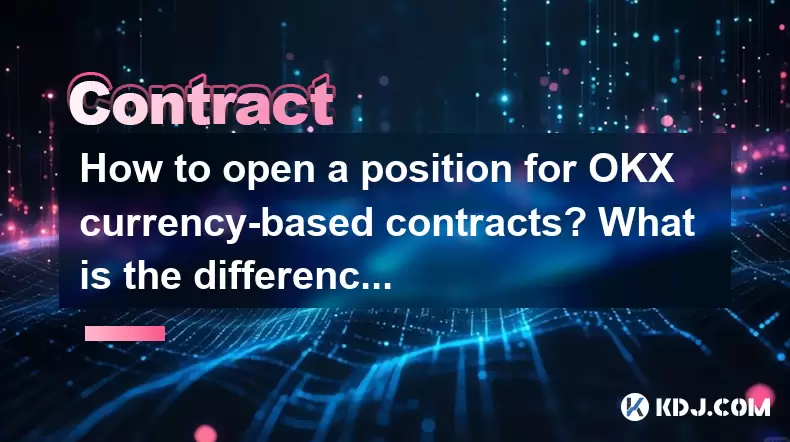-
 Bitcoin
Bitcoin $116700
2.16% -
 Ethereum
Ethereum $3830
5.76% -
 XRP
XRP $3.082
4.56% -
 Tether USDt
Tether USDt $1.000
0.04% -
 BNB
BNB $777.8
1.96% -
 Solana
Solana $173.2
5.46% -
 USDC
USDC $0.0000
0.02% -
 Dogecoin
Dogecoin $0.2146
6.85% -
 TRON
TRON $0.3384
0.92% -
 Cardano
Cardano $0.7676
5.51% -
 Hyperliquid
Hyperliquid $39.28
4.90% -
 Sui
Sui $3.723
9.07% -
 Stellar
Stellar $0.4164
6.32% -
 Chainlink
Chainlink $17.36
5.78% -
 Bitcoin Cash
Bitcoin Cash $580.9
3.62% -
 Hedera
Hedera $0.2544
5.50% -
 Ethena USDe
Ethena USDe $1.001
0.02% -
 Avalanche
Avalanche $22.81
3.81% -
 Litecoin
Litecoin $120.8
3.60% -
 UNUS SED LEO
UNUS SED LEO $8.956
-0.35% -
 Toncoin
Toncoin $3.311
4.28% -
 Shiba Inu
Shiba Inu $0.00001266
4.15% -
 Uniswap
Uniswap $10.10
5.97% -
 Polkadot
Polkadot $3.786
4.80% -
 Dai
Dai $1.000
0.01% -
 Monero
Monero $280.4
-4.02% -
 Bitget Token
Bitget Token $4.405
1.69% -
 Cronos
Cronos $0.1480
5.13% -
 Pepe
Pepe $0.00001087
5.67% -
 Ethena
Ethena $0.6348
11.62%
How to open a position for OKX currency-based contracts? What is the difference between USDT contracts?
To trade OKX currency-based contracts, log in, navigate to derivatives, select your pair, choose order type, and confirm; they differ from USDT contracts in settlement and volatility.
May 16, 2025 at 06:56 pm

Opening a position for OKX currency-based contracts involves several steps, and understanding the differences between these contracts and USDT contracts is crucial for effective trading. This article will guide you through the process of opening a position for OKX currency-based contracts and provide a detailed comparison with USDT contracts.
Understanding OKX Currency-Based Contracts
OKX currency-based contracts are derivatives that allow traders to speculate on the price movements of cryptocurrencies against other cryptocurrencies. These contracts are settled in the base currency of the pair, meaning if you trade a BTC/ETH contract, the settlement will be in ETH.
Steps to Open a Position for OKX Currency-Based Contracts
To open a position for OKX currency-based contracts, follow these detailed steps:
Log into Your OKX Account: Ensure you have an OKX account and are logged in. If you don't have an account, you'll need to sign up and complete the necessary verification processes.
Navigate to the Trading Section: Once logged in, go to the trading section of the OKX platform. You can find this by clicking on the "Trade" tab at the top of the page.
Select the Currency-Based Contracts: In the trading section, select "Derivatives" and then choose "Currency-Based Contracts." You'll see a list of available pairs such as BTC/ETH, ETH/LTC, etc.
Choose Your Trading Pair: Select the trading pair you want to trade. For example, if you want to trade BTC against ETH, click on the BTC/ETH pair.
Set Your Position: Decide whether you want to go long (buy) or short (sell) on the chosen pair. This depends on your prediction of the price movement.
Determine Your Order Type: OKX offers several order types such as Market, Limit, and Stop orders. Choose the one that suits your trading strategy.
- Market Order: Executes the trade at the current market price.
- Limit Order: Executes the trade at a specified price or better.
- Stop Order: Triggers a market order when the price reaches a specified level.
Enter Your Order Details: Input the amount you want to trade and any other relevant details depending on your chosen order type. For example, if you choose a limit order, you'll need to set the limit price.
Review and Confirm Your Order: Double-check all the details of your order. Once you're satisfied, click on the "Confirm" button to place your order.
Monitor Your Position: After your order is executed, you can monitor your position in the "Positions" section of the OKX platform. Here, you can see your unrealized profit/loss and manage your position as needed.
Understanding USDT Contracts
USDT contracts are derivatives that allow traders to speculate on the price movements of cryptocurrencies against the stablecoin USDT. These contracts are settled in USDT, providing a more stable reference point for trading due to the stablecoin's peg to the US dollar.
Key Differences Between OKX Currency-Based Contracts and USDT Contracts
Understanding the differences between OKX currency-based contracts and USDT contracts is essential for choosing the right trading instrument for your strategy:
Settlement Currency: The most significant difference is the settlement currency. Currency-based contracts are settled in the base currency of the pair, while USDT contracts are settled in USDT. This affects the final value of your position.
Volatility: Currency-based contracts can be more volatile because both the base and quote currencies are cryptocurrencies, which can fluctuate significantly. USDT contracts, on the other hand, are less volatile due to the stability of USDT.
Liquidity: USDT contracts often have higher liquidity because more traders prefer the stability of USDT. Currency-based contracts may have lower liquidity depending on the pair.
Trading Strategy: Currency-based contracts are suitable for traders who want to speculate on the relative value of two cryptocurrencies. USDT contracts are better for traders who want to hedge against the volatility of cryptocurrencies or trade against a stable reference point.
Choosing Between OKX Currency-Based Contracts and USDT Contracts
When deciding between OKX currency-based contracts and USDT contracts, consider the following factors:
Risk Tolerance: If you have a higher risk tolerance and are comfortable with the potential volatility of trading two cryptocurrencies against each other, currency-based contracts might be suitable. If you prefer a more stable trading environment, USDT contracts could be a better choice.
Trading Goals: If your goal is to speculate on the relative value of two cryptocurrencies, currency-based contracts are the way to go. If you want to trade against a stable reference point or hedge against cryptocurrency volatility, USDT contracts are more appropriate.
Market Conditions: Pay attention to the market conditions of the cryptocurrencies you're interested in. Currency-based contracts might offer more opportunities in a highly volatile market, while USDT contracts could be more advantageous in a stable market.
Frequently Asked Questions
Q: Can I switch between currency-based contracts and USDT contracts on OKX?
A: Yes, you can switch between currency-based contracts and USDT contracts on OKX. Simply navigate to the derivatives section and choose the type of contract you want to trade. However, remember that switching between contract types involves closing your current position and opening a new one, which may incur additional fees and affect your trading strategy.
Q: Are there any specific trading tools available for currency-based contracts on OKX?
A: OKX offers various trading tools that can be used for currency-based contracts, including advanced charting, technical indicators, and risk management tools. These tools can help you analyze market trends and make informed trading decisions. You can access these tools in the trading section of the OKX platform.
Q: What are the fees associated with trading OKX currency-based contracts?
A: The fees for trading OKX currency-based contracts vary depending on your trading volume and the type of order you place. Generally, OKX charges a maker fee and a taker fee. You can find the most up-to-date fee structure on the OKX website or in the trading section of the platform. It's important to consider these fees when calculating your potential profits and losses.
Q: How does leverage work with OKX currency-based contracts?
A: Leverage allows you to control a larger position with a smaller amount of capital. With OKX currency-based contracts, you can choose the level of leverage you want to use, which can range from 1x to 100x or more, depending on the pair. Higher leverage increases both your potential profits and your potential losses, so it's crucial to use leverage responsibly and understand the risks involved.
Disclaimer:info@kdj.com
The information provided is not trading advice. kdj.com does not assume any responsibility for any investments made based on the information provided in this article. Cryptocurrencies are highly volatile and it is highly recommended that you invest with caution after thorough research!
If you believe that the content used on this website infringes your copyright, please contact us immediately (info@kdj.com) and we will delete it promptly.
- Ollama Turbo & GPT-OSS: Revolutionizing AI Model Accessibility and Speed
- 2025-08-07 20:29:33
- Bitcoin Ordinals: NFTs Evolving Bitcoin or a Fleeting Fad?
- 2025-08-07 20:29:33
- BlockchainFX, Bitcoin Swift, Crypto Presales: What's the Hype?
- 2025-08-07 19:10:13
- Pepe Dollar (PEPD) vs. SPX6900: The Meme Coin Battle of 2025
- 2025-08-07 19:50:12
- XRP Investment Regret: Are You Missing Out on the Next Big Thing?
- 2025-08-07 19:50:12
- XRPINU: More Than Just a Meme? Roadmap, Liquidity, and the Future of Funny Money
- 2025-08-07 19:56:46
Related knowledge

What programming languages are used for smart contracts?
Aug 07,2025 at 06:07pm
Understanding Smart Contracts and Their Execution EnvironmentSmart contracts are self-executing programs deployed on blockchain networks that automati...

What is a long position in crypto contracts?
Aug 07,2025 at 06:29pm
Understanding the Concept of a Long Position in Crypto ContractsA long position in crypto contracts refers to a trading strategy where a trader buys a...

Why is my Bitstamp futures position being liquidated?
Jul 23,2025 at 11:08am
Understanding Futures Liquidation on BitstampFutures trading on Bitstamp involves borrowing funds to open leveraged positions, which amplifies both po...

How to report Bitstamp futures for taxes?
Jul 30,2025 at 08:35am
Understanding Bitstamp Futures and Taxable EventsWhen trading Bitstamp futures, it’s essential to recognize that these financial instruments are treat...

Does Bitstamp offer inverse contracts?
Jul 23,2025 at 01:28pm
Understanding Inverse Contracts in Cryptocurrency TradingIn the realm of cryptocurrency derivatives, inverse contracts are a specific type of futures ...

What is the difference between futures and perpetuals on Bitstamp?
Jul 27,2025 at 05:08am
Understanding Futures Contracts on BitstampFutures contracts on Bitstamp are financial derivatives that allow traders to speculate on the future price...

What programming languages are used for smart contracts?
Aug 07,2025 at 06:07pm
Understanding Smart Contracts and Their Execution EnvironmentSmart contracts are self-executing programs deployed on blockchain networks that automati...

What is a long position in crypto contracts?
Aug 07,2025 at 06:29pm
Understanding the Concept of a Long Position in Crypto ContractsA long position in crypto contracts refers to a trading strategy where a trader buys a...

Why is my Bitstamp futures position being liquidated?
Jul 23,2025 at 11:08am
Understanding Futures Liquidation on BitstampFutures trading on Bitstamp involves borrowing funds to open leveraged positions, which amplifies both po...

How to report Bitstamp futures for taxes?
Jul 30,2025 at 08:35am
Understanding Bitstamp Futures and Taxable EventsWhen trading Bitstamp futures, it’s essential to recognize that these financial instruments are treat...

Does Bitstamp offer inverse contracts?
Jul 23,2025 at 01:28pm
Understanding Inverse Contracts in Cryptocurrency TradingIn the realm of cryptocurrency derivatives, inverse contracts are a specific type of futures ...

What is the difference between futures and perpetuals on Bitstamp?
Jul 27,2025 at 05:08am
Understanding Futures Contracts on BitstampFutures contracts on Bitstamp are financial derivatives that allow traders to speculate on the future price...
See all articles

























































































